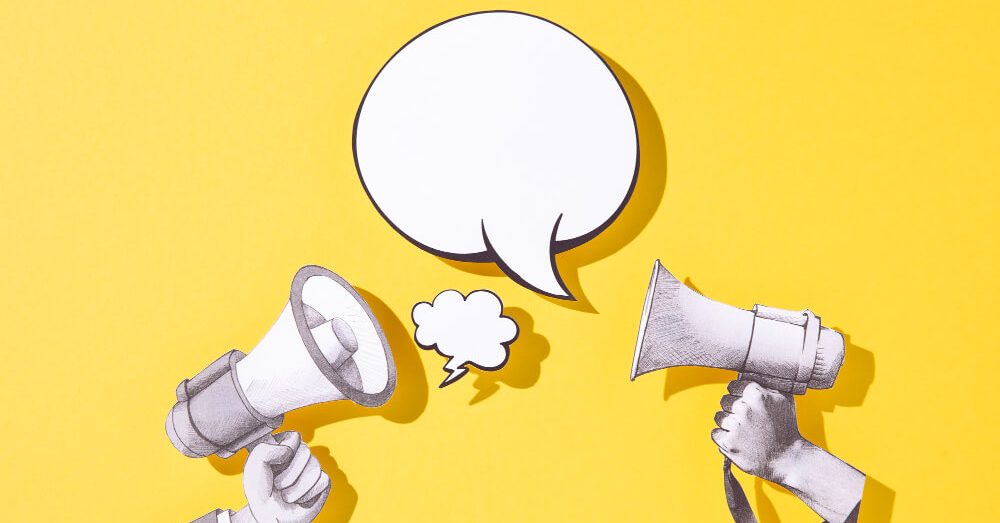The Art of Call-to-Action

The most important element of the landing page is Call to action (CTA) as it motivates the user to action the way you expect him to. Therefore, the more effective the CTA, the more effective it is.
A page with a minimum content (text or graphics) and with a call to action that grabs attention and stimulates the user is more likely to bring more conversions than a beautifully filled page without it.
The fullness of text and images on the page is often a factor reducing conversions – which is exactly the opposite of the expected effect. Of course, there is no “one-size-fits-all” recipe for increasing conversions with CTAs.
The most successful call can only be found empirically, with the help of split testing. However, this principle – tests in practice – is also best suited for conversion optimization.
These 10 methods will point you in the right direction.
1. Explain the need. Why do I need it?
In order the user reacts to your call (i.e., a conversion occurs), he must realize the necessity to act.
The classic marketing tactic works well here: before pushing the customer, you should explain that he/she has some obvious problem, but your product is able to solve it.
In addition, don’t forget to emphasize the benefits that he will receive by subscribing to your newsletter or filling out the lead form fields.
2. Call to vote and call to win the contest
It may happen that you have to “slightly sugar-coat” your offer to push the customers.
The incentive can be a discount, an invitation to participate in a contest with prizes, or some kind of gift (by the way – do not forget that coupons are in fashion now.
3. Minimize the number of CTAs on your landing page
It is very important that the number of calls to action per page be kept to a minimum (ideally, one page, one call to action).
If you post too many CTAs, then the user will be lost.
This simple truth is also confirmed by practical marketing research conducted in conventional, “offline” supermarkets: the more goods a customer has to choose from, the less likely he is to make a purchase at all.
By limiting the number of options, you reduce the amount of mental effort required from the visitor to make a decision. The allowed number of calls may vary depending on the goals you are pursuing on the landing page.
Remember! You only have 8 seconds to respond, don’t make your prospect think.
4. Use "active" verbs and phrases that emphasize the need for immediate action
A call to action should clearly send your message to users.
The easiest way to achieve the desired effect is with the help of so-called “active” verbs, such as:
- – Call
- – Buy
- – Register
- – Subscribe
- – Donate
Also using a call to competition style phrases like “Purchase our product quicker than others and get a nice bonus!” you can create a sense of urgency and the need to act now.
5. Place the CTA on the page correctly
Ideally, it should be placed in the center column at the top of the page.
Less scrolling (“scrolling”), less distracting graphics for the user – a simple, understandable principle.
6. Make good use of free space
In addition the space around the CTA is not less important than the correct location. The more free space, the more attention is paid to the CTA itself.
7. Use eye-catching palettes
To draw attention to a CTA element use the color, especially if the rest of the page has a rather limited color palette.
8. Increase the size of the button or lead form
We have already established that position, color and surrounding space are equally important for high conversions.
However, no one will deny that the size of the button (or lead form) also plays a role: the larger the CTA element, the higher the chance that it will be noticed.
9. Place calls to action evenly across the length of the page (and on every page if it's a website)
If you end up with a “long” landing page (requiring more than one scroll), don’t forget to place additional conversion elements on the page based on the calculation: one screen height – one CTA.
And do the same when placing CTA on a multi-page site – each page of your site should include a form or a button. By the way, in this case, your CTA can be different.
10. Don't "scare" the user by collecting unnecessary information
Before you start generating leads, you need to consider the question: How many fields to fill in should be in your lead form?
The principle of working with leads is as follows: the more fields, the better the lead, but the lower the conversion. Most Internet users are extremely reluctant to share personal information.
However, a lead form with only two fields is often enough: a username and their email address.
An effective call to action is the “core” of a successful advertising campaign and is a combination of the best techniques from the arsenal of “web usability”, graphic design and the art of writing advertising texts (copywriting).
Apply the above techniques and enjoy your sales increase!
Search Blog
Categories
- Analytics(16)
- Android Development(1)
- Apps development(1)
- Branding(32)
- Branding solution(20)
- Business(20)
- Construction marketing(2)
- Design(12)
- Design and creative(15)
- Digital solution(14)
- Facebook(4)
- Google Ads(6)
- Graphics(9)
- Instagram(8)
- Marketing research(15)
- Marketing solution(20)
- Marketing strategy(23)
- PPC(9)
- SEO(12)
- SMM(18)
- Social media marketing(12)
- TikTok(5)
- Uncategorized(7)
- Video content(4)
- Video production(4)
- Web Design(4)
- Web Development(6)
- YouTube(3)
Categories
- Branding solution (2)
- Brand identity
- Brandbook
- Design and creative (2)
- Graphic design
- Illustration
- Marketing solution (4)
- Marketing
- Marketing research
- Marketing strategy
- Mystery shopping
- Didgital solution(4)
- Google, Facebook ADS
- Search Engine Optimisation
- Website development
- Digital marketing
- Social media marketing(5)
- Facebook marketing
- Instagram marketing
- LinkedIn marketing
- Complex SMM
- TikTok Marketing
- Video production(4)
- Short video production
- Video animation
- Video presentation
- YouTube Marketing
Our Top Articles
Recent Posts
- How CMCG Marketing Agency Helps Grow HVAC Businesses October 24, 2024
- Marketing Solutions for HVAC Companies September 13, 2024
- Working with Negativity on Social Media October 3, 2023
- The Difference Between Rebranding and Redesign October 2, 2023
- Font Marketing Development: The Power of Typography in Branding and Design September 28, 2023
Popular Tags
Advertising Analytics Artificial intelligence brand Brand book Brand identity Brand management Brand platform Brand positioning Brand recognition Brand visibility Content marketing Customer Journey Map Customer segmentation Digital advertising Digital marketing Facebook Google Ads Graphic design Influencer marketing Instagram Instagram post Landing page Logo design Marketing Marketing agency Marketing efficiency Marketing funnel Marketing strategy Native advertising Pack design PPC Reels SEO Short videos SMM Social Media Social Media Marketing SWOT analysis Target audience TikTok Tone of voice Website Website development YouTube

